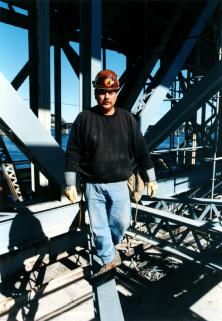 |
|||||
|
|
|
|
|
|
|
 |
|||||
|
|
|
|
|
|
|
| Réalisé par Alanis Obomsawin |
| Canada, 1997 (documentaire, 58 minutes, couleurs, anglais) |
|
Autre |

|
| Image : © Office national du film du Canada |
| Vidéo (Office national du film du Canada) [anglais] |
|
Description du film : « Randy Horne est un monteur de poutres d'acier de la communauté mohawk de Kahnawake, près de Montréal. Durant la crise d'Oka de 1990, il était connu sous le nom de 'Spudwrench'. Il se retrouva derrière les barricades pour empêcher la municipalité d'Oka d'agrandir un terrain de golf qui aurait empiété sur un territoire mohawk sacré. Comme de nombreux autres Mohawks, Horne a parcouru le continent et travaillé sur certains des plus hauts édifices du monde, sans toutefois perdre de vue ses racines. Spudwrench, l'homme de Kahnawake est à la fois un portrait de Randy Horne et des générations de Mohawks audacieux qui l'ont précédé comme travailleurs dans la construction, et un regard unique derrière les barricades sur un homme qui défend avec passion un territoire sacré. » -- Office national du film du Canada (source) |
| Générique (partiel) : | |
| Scénario : | Alanis Obomsawin |
| Produit par : | Alanis Obomsawin, Don Haig |
| Montage images : | Donna Read |
| Musique : | Claude Vendette, Francis Grandmont |
| Société de production : | National Film Board of Canada / Office national du film du Canada |
« Certainly, Spudwrench comes across as peaceful and hardworking, which suits the film's emphasis on the importance of Native labor to the wider economy of North America. In depicting scenes such as Spudwrench's long commute from Canada to New York City to toil on half-constructed skyscrapers, Obomsawin creates an insightful portrait of Native men as a neglected part of the working-class culture of North America. »
-- Randolph Lewis
(source)
|
|
|
|
|
|
|